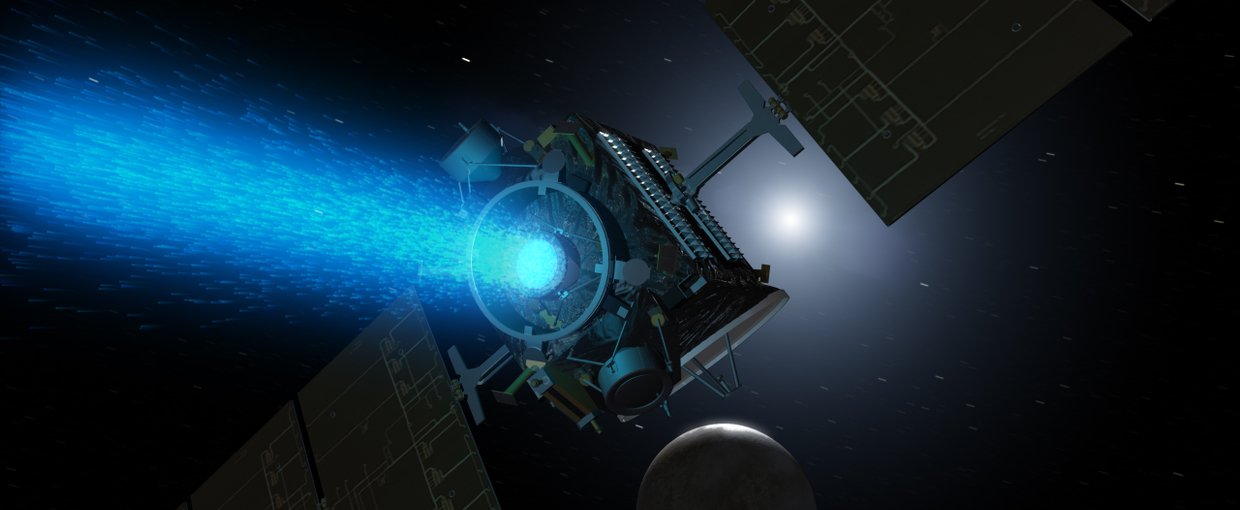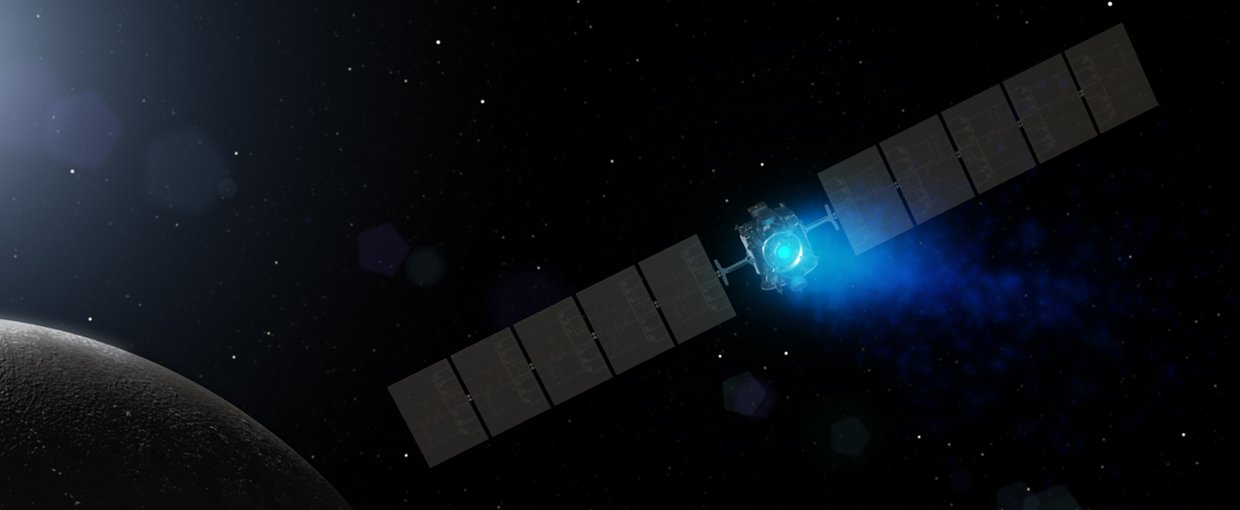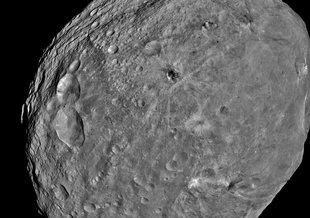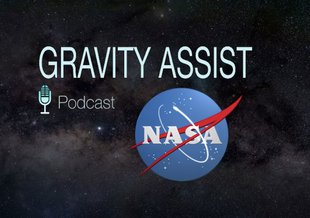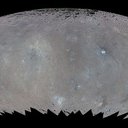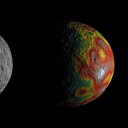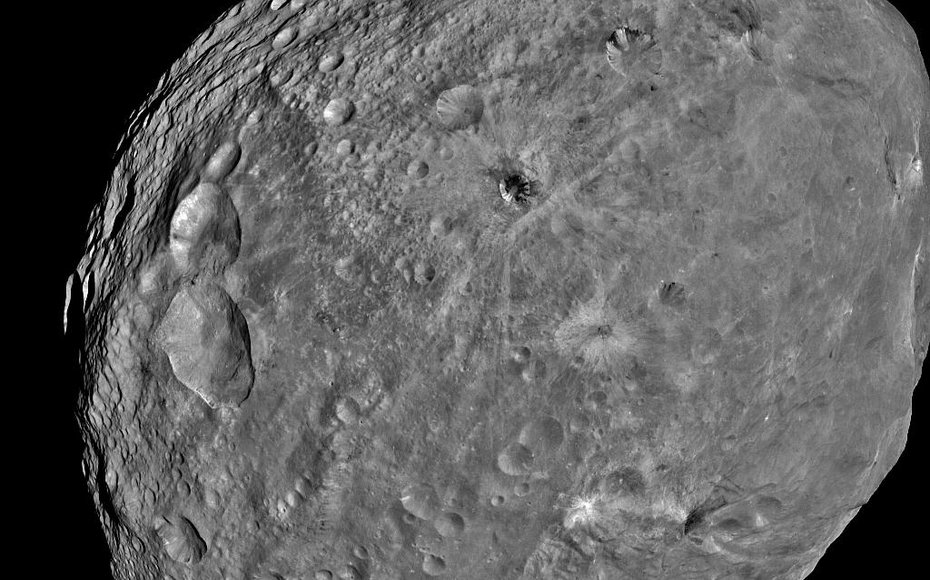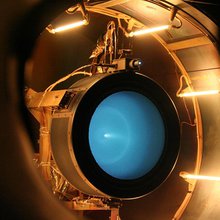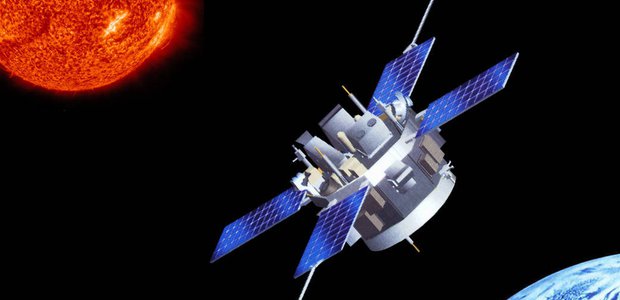- Launch Date October 26, 2007
- Arrival Date July 01, 2011
- End DateNovember 01, 2018
- Mission TypeFlyby
- TargetVesta and Ceres
Mission Overview
NASA’s Dawn spacecraft visited two of the Solar System’s largest protoplanets, Vesta and Ceres. Studying the data that Dawn collected on these objects will continue to yield new information about the early Solar System and the formation of rocky planets for years to come.
Relevance to Astrobiology
Vesta and Ceres are remnants of the early Solar System. Studying these objects can help astrobiologists understand how our System evolved to become the only known system to support an inhabited planet – the Earth.
Both Ceres and Vesta could harbor water ice, and the European Space Agency’s Herschel telescope has identified water vapor around Ceres. Studying materials like water ice on these rocky bodies can help astrobiologists understand the inventory of molecules that could have been delivered to the early Earth from space. This information is important in determining the potential role of such materials in the origins of life on our planet.
NASA Astrobiology Involvement
The Astrobiology Program supports researchers who are working with data from the Dawn mission.

